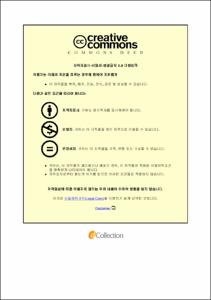한국어 명사 수식어의 영어 번역양상에 관한 연구
- Abstract
- The purpose of this study is to provide patterns found in the translation of Korean noun modifiers into English. This study attempts to compare the usage of the progressive aspect in Korean and English in terms of semantics and discourse-pragmatics. In order to undertake this comparison, an analysis of a parallel corpus of Korean-to-English translated texts was conducted. For the purposes of this analysis, 941 noun modifiers after excluding duplicates were selected from three novels.
The results of the analysis of the Korean-English parallel corpus show that there are three types of translations of Korean noun modifiers into English, as follows: ⅰ) The type of translation depends on the classification of the noun modifier. In English translations of Korean, when referring to content to be introduced in the future, the noun modifier is translated as "this". When referring to content that has already been mentioned, it is translated as "the", and when the distance between the speaker and the head noun the referent is far, it is translated as "that". ⅱ) When multiple modifiers are used, pre-nominals are translated in a different order according to the strict word order and the adjective modifier word order in the noun phrase of Givón. Post-nominals showed a change in word order depending on the animacy of the head noun and the presence or absence of a noun indicating position, and changes in the translated word order also appeared when pre-nominals and post-nominals started from modifiers close to the head noun. ⅲ) Modifiers added in English translations even when not present in the original Korean text were found to be determiners, articles, possessive pronouns, demonstratives and quantifiers. When the modifier is applied to old information, a definite article is used, while when the modifier is applied to new information, an indefinite article is used. Possessive pronouns are used to emphasize the human agent, quantifiers are used to convey the exact meaning of the scene, and demonstratives are used to clarify specific objects. Modifiers are omitted in English to avoid repetition when they have previously been mentioned, are unnecessary, or can be understood from context.
- Issued Date
- 2021
- Awarded Date
- 2021. 8
- Type
- Dissertation
- Publisher
- 부경대학교
- Affiliation
- 부경대학교 대학원
- Department
- 대학원 영어영문학과
- Advisor
- 김은일
- Table Of Contents
- Ⅰ. 서론 1
1.1 연구의 배경 및 목적 1
1.2 분석자료 및 방법 4
1.3 연구 구성 6
Ⅱ. 이론적 배경 8
2.1 명사 수식어 분류 8
2.1.1 한국어 수식어 분류 8
2.1.1.1 관형사 9
2.1.1.2 명사 관형사형 10
2.1.1.3 서술어 관형사형 11
2.1.2 영어 수식어 분류 13
2.1.2.1 명사전 수식어 14
2.1.2.1.1 양화사 14
2.1.2.1.2 한정사 15
2.1.2.1.3 형용사 16
2.1.2.1.4 수식명사 17
2.1.2.2 명사후 수식어 18
2.1.2.2.1 관계절 18
2.1.2.2.2 전치사구 19
2.2 어순 20
2.2.1 한국어 20
2.2.2 영어 23
Ⅲ. 관형어 종류별 번역양상 26
3.1 관형사 27
3.1.1 지시 관형사 27
3.1.1.1 지시 관형사 '이' 28
3.1.1.2 지시 관형사 '그' 30
3.1.1.3 지시 관형사 '저' 34
3.1.2 성상 관형사 35
3.1.3 수 관형사 36
3.2 명사 관형사형 39
3.2.1 명사(N1∅+N2) 40
3.2.2 명사+의(N1의+N2) 42
3.3 서술어 관형사형 45
3.3.1 형용사 관형사형 46
3.3.2 동사 관형사형 48
3.3.2.1 관계절 48
3.3.2.2 분사 50
3.3.2.3 전치사구 52
3.3.2.4 부정사 55
3.3.2.5 형용사 56
Ⅳ. 어순변화에 따른 번역양상 57
4.1 명사전 수식어 58
4.2 명사후 수식어 60
4.3 명사전·후 수식어 62
Ⅴ. 추가 및 생략의 번역양상 64
5.1 추가 64
5.1.1 관사 64
5.1.2 소유격 대명사 66
5.1.3 지시사 66
5.1.4 양화사 67
5.2 생략 68
5.2.1 지시 관형사 69
5.2.2 수 관형사 70
5.2.3 명사 관형사형 70
5.2.4 형용사 관형사형 71
5.2.5 동사 관형사형 72
Ⅵ. 결론 74
분석자료 목록 76
참고문헌 77
- Degree
- Doctor
- Files in This Item:
-
-
Download
 한국어 명사 수식어의 영어 번역양상에 관한 연구.pdf
기타 데이터 / 603.54 kB / Adobe PDF
한국어 명사 수식어의 영어 번역양상에 관한 연구.pdf
기타 데이터 / 603.54 kB / Adobe PDF
-
Items in Repository are protected by copyright, with all rights reserved, unless otherwise indicated.